A320: exterior lights
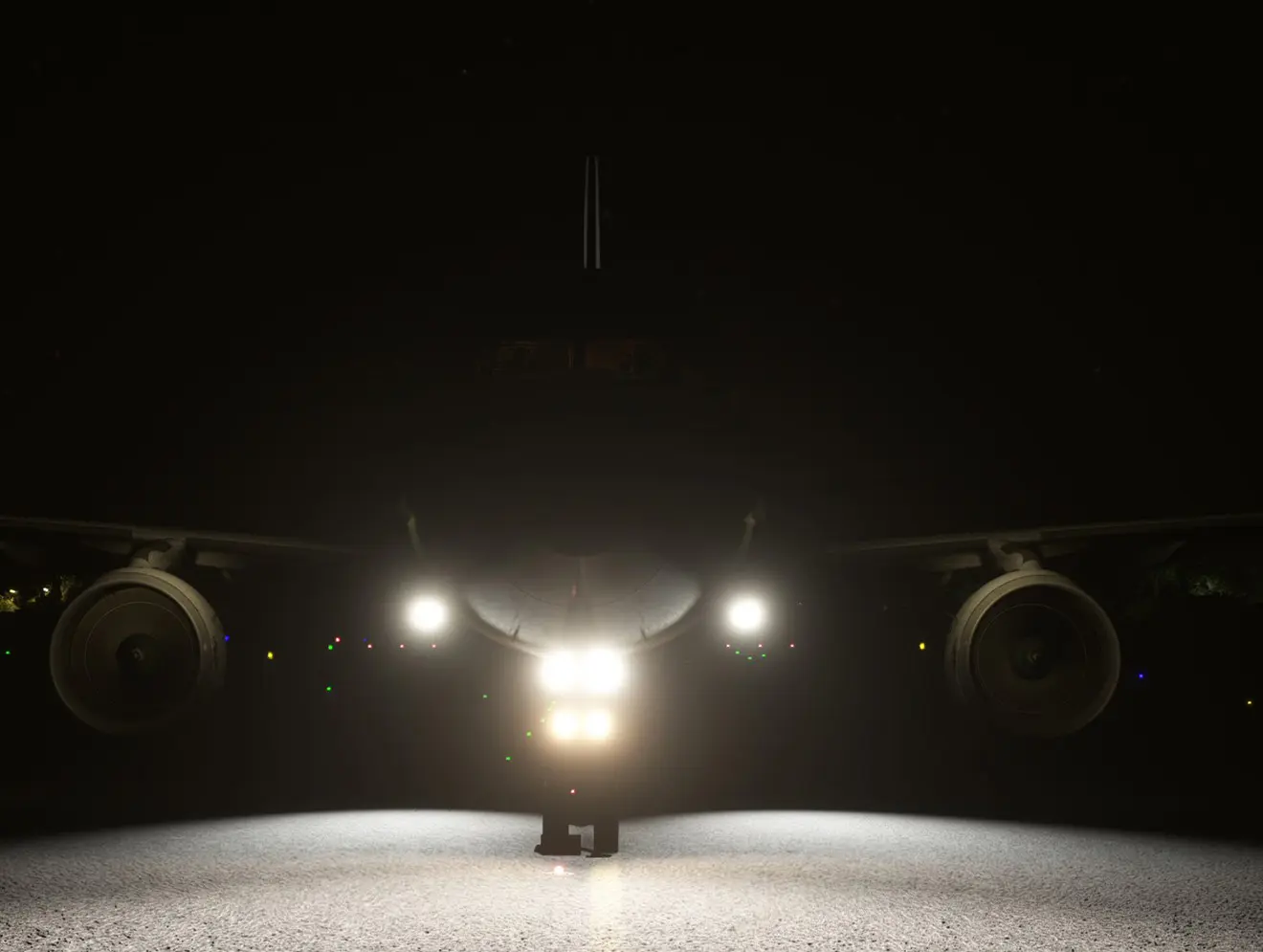
The A320 has, in terms of exterior lighting, the following elements:
- Navigation lights,
- Landing lights,
- Bending lights,
- Landing and taxiing lights,
- Drift lighting,
- Anti-collision and strobe lights.
All of these lights are controlled by the EXT LT panel on the top panel.
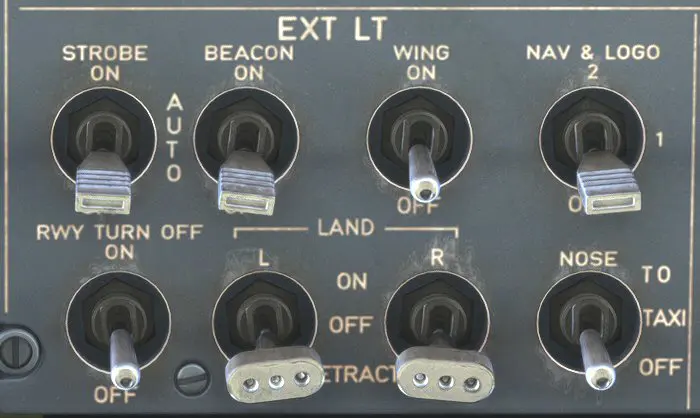
They allow not only to see but also to be seen. Their use in a standardized manner makes it possible to signal to operators in the external environment the current situation of the aircraft (engines en route, taxiing, alignment, takeoff roll, etc.).
Concerning use in degraded mode, the flight authorizations or the troubleshooting required may vary from one company to another. The remarks mentioned below are provided only as possible examples.
3-position STROBE switch:
This switch turns on or off the three synchronized white strobe lights located at the tip of each wing and on the tail cone.
In the OFF position, the strobes are off.
In the ON position, the strobes flash white.
In the AUTO position, the strobes will turn on automatically, in case of forgetting, when the main gear is no longer compressed (= plane in the air).
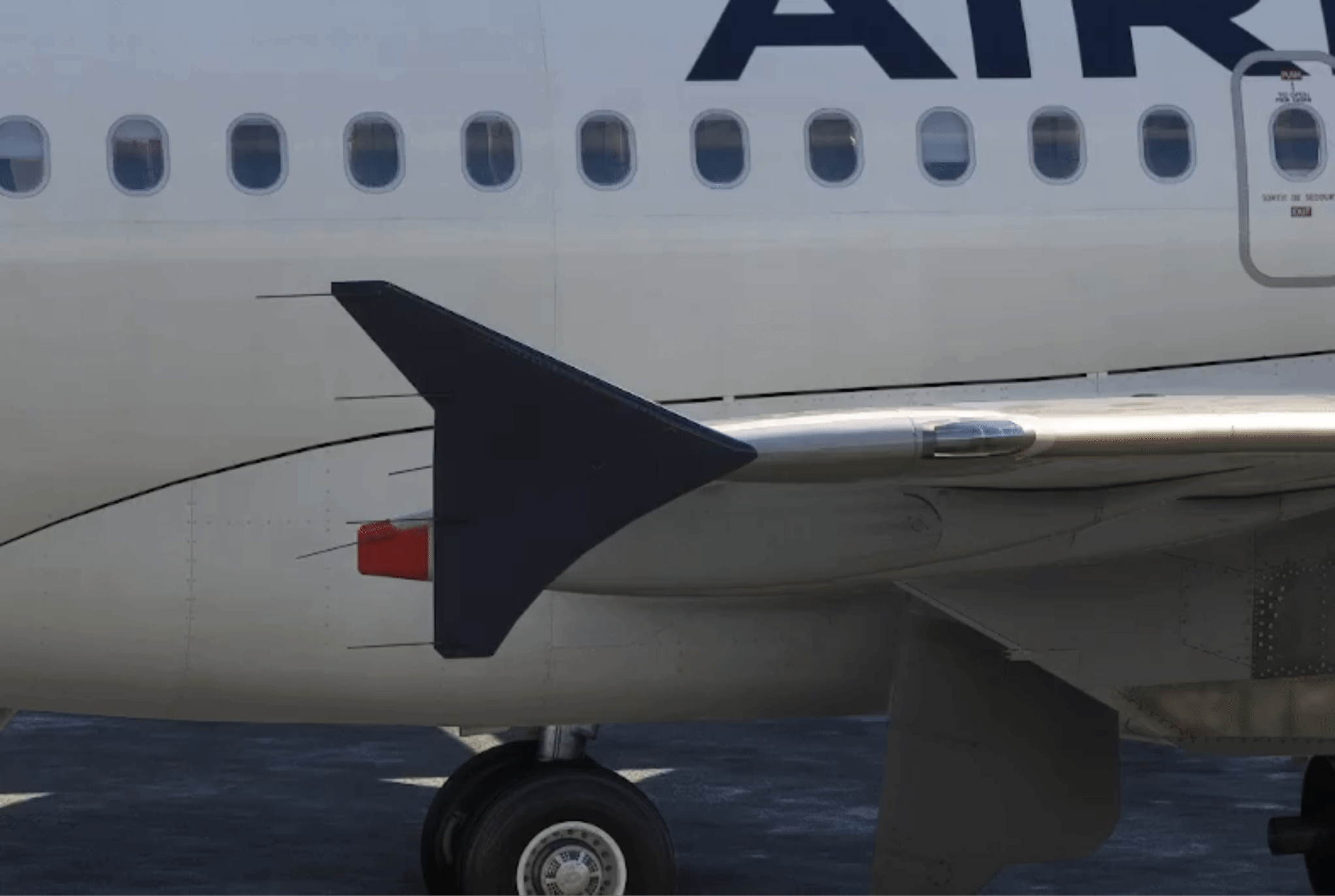
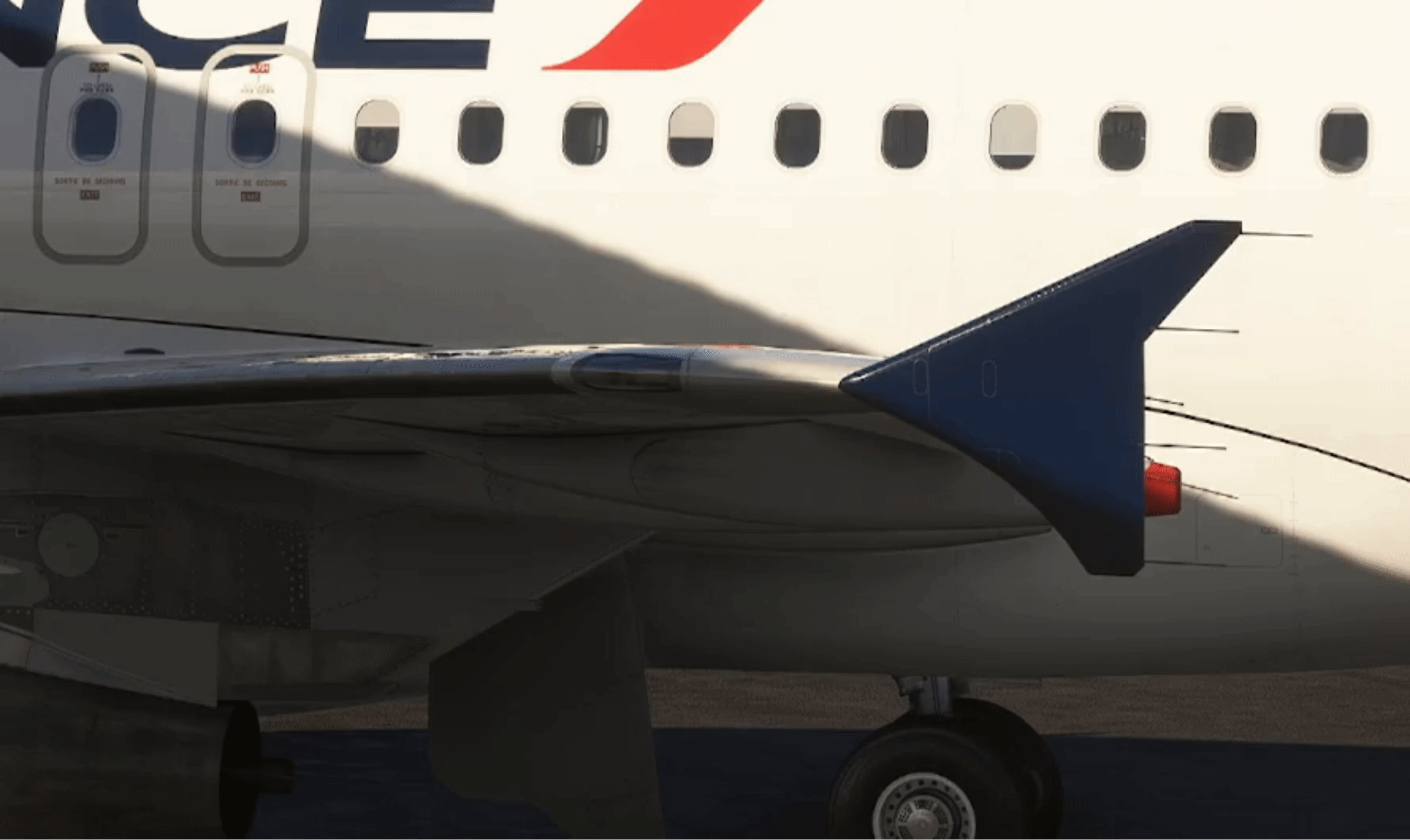
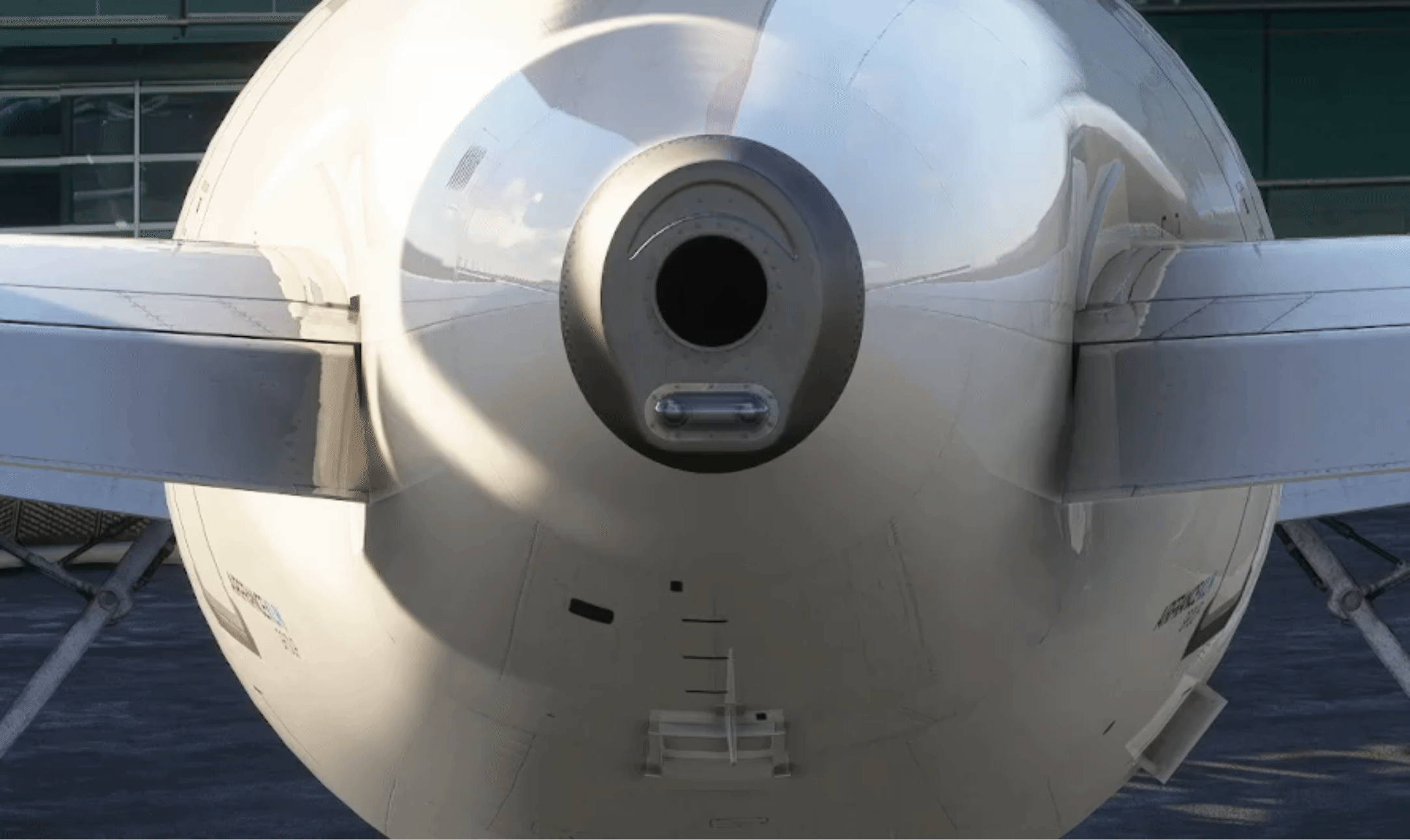
Use: switch to ON for:
- A crossing of the track,
- As soon as alignment is authorized,
- The entire duration of the flight until clearance of the runway on arrival.
Change to OFF after leaving the track at the finish.
The failure of one or more strobe lights has no impact on the completion of the flight (normal operation not obligatory).
BEACON switch:
This switch turns the two flashing red lights on or off, one above and one below the fuselage.
In the OFF position, the beacons are turned off.
In the ON position, the beacons flash red.
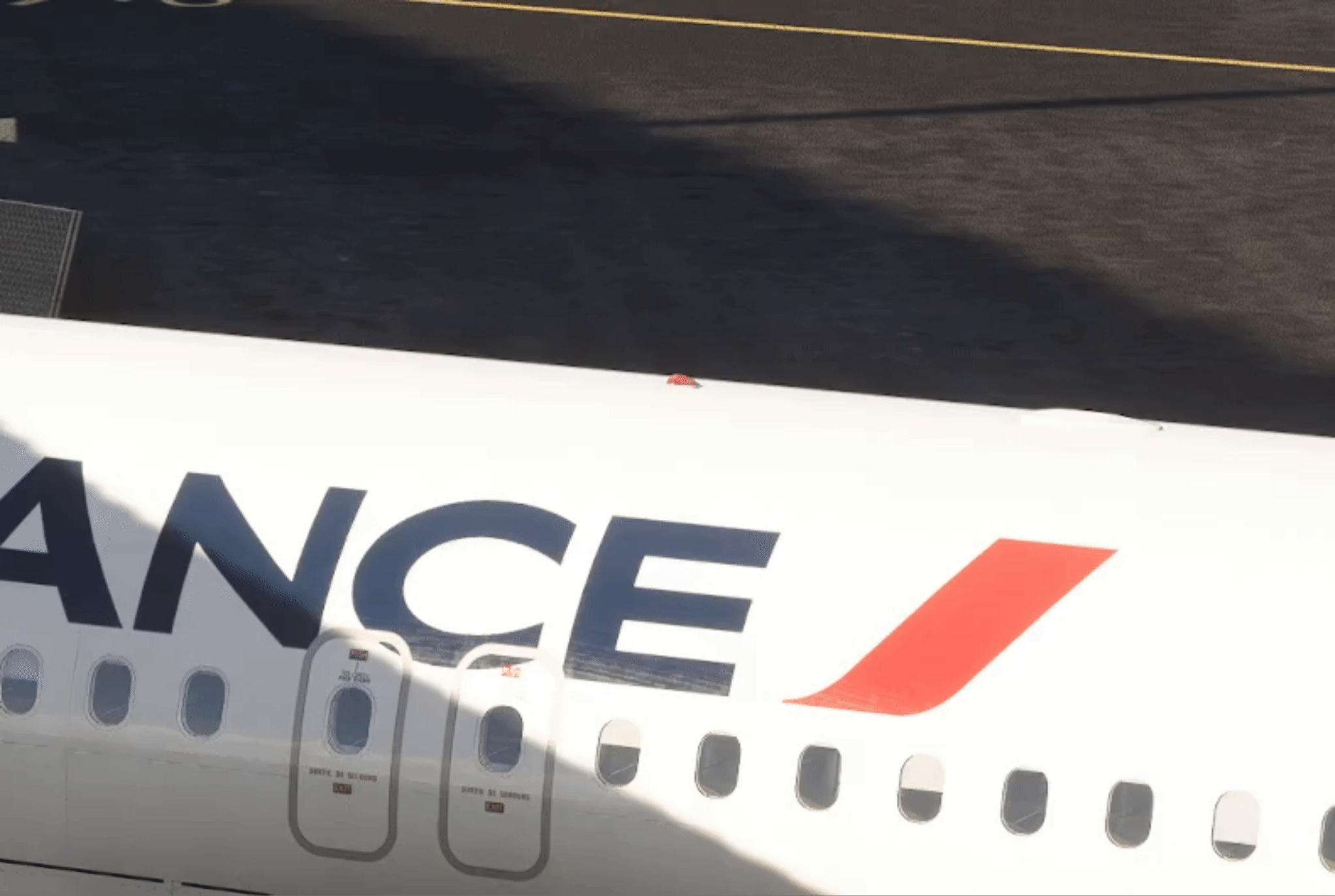
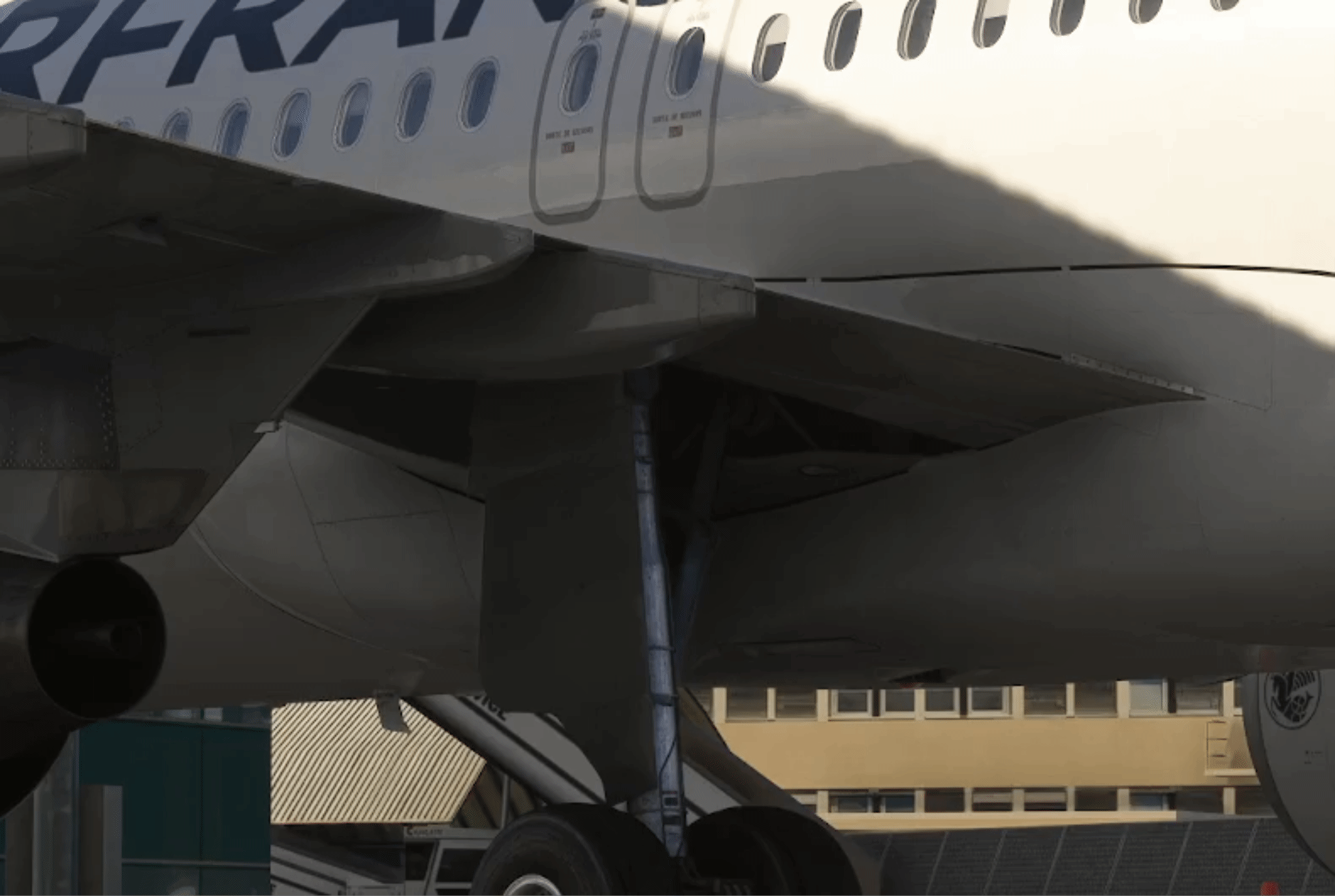
Use: switching to ON to signal the imminent start of the engines (for an autonomous departure) or the movement of the aircraft (during push) which implies that ground operations around the aircraft are completed, the aircraft is ready, pre-departure checklists are carried out and authorization to start has been obtained. At certain airports the switching on of lights beacons cause ground operations on adjacent aircraft to cease.
Change to OFF upon arrival at the parking lot, only after the engines have been cut off, thus signaling to the ground teams that the danger of ingestion by the engines has been eliminated and that the situation is safe and that they are authorized to approach the aircraft.
The failure of one or more strobe lights has no impact on the completion of the flight (normal operation not obligatory) only if the STROBE lights are functional. However, in the event of a breakdown of the lower beacon both when starting and stopping the engines, an alternative procedure must have been agreed with the ground personnel to notify them of the imminence of the starting on departure or the effective shutdown of the engines on arrival.
WING switch:
This switch turns the two beams on or off on either side of the fuselage. They illuminate the leading edge of the wing and the engine inlet in order to detect a possible ice accretion in icing conditions. Note that on the A321, these lights are almost unusable from the cockpit, as most of the wing is not visible.
In the OFF position, the fender lights are off.
In the ON position, the fender lights are on.
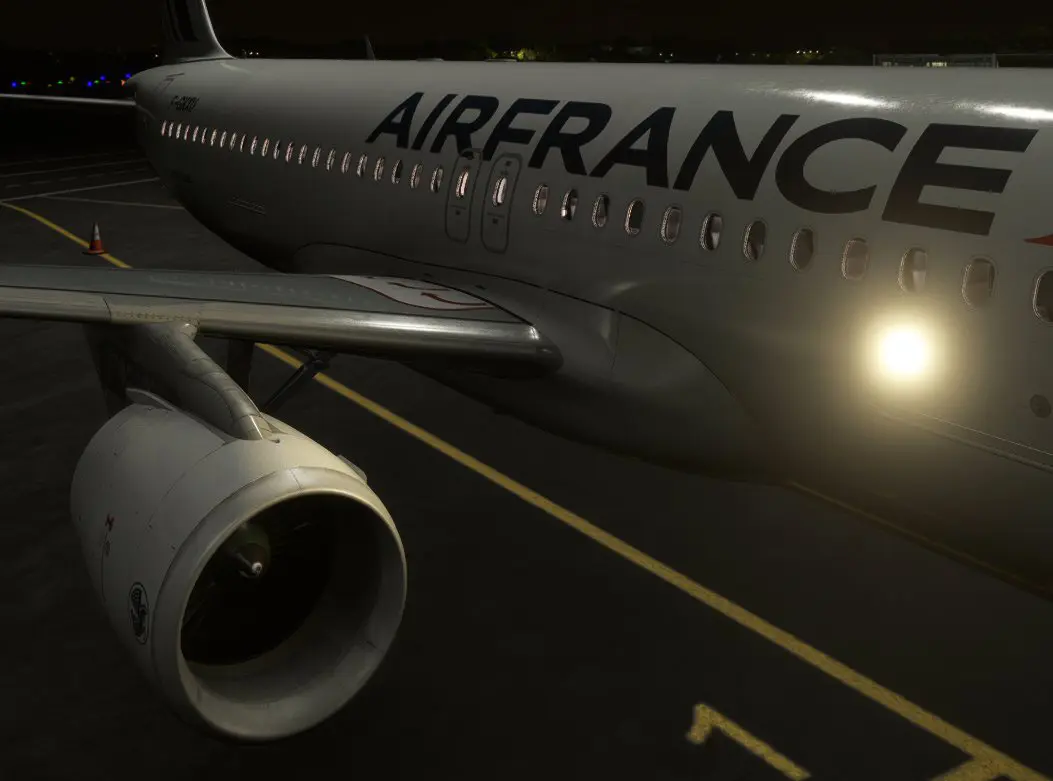
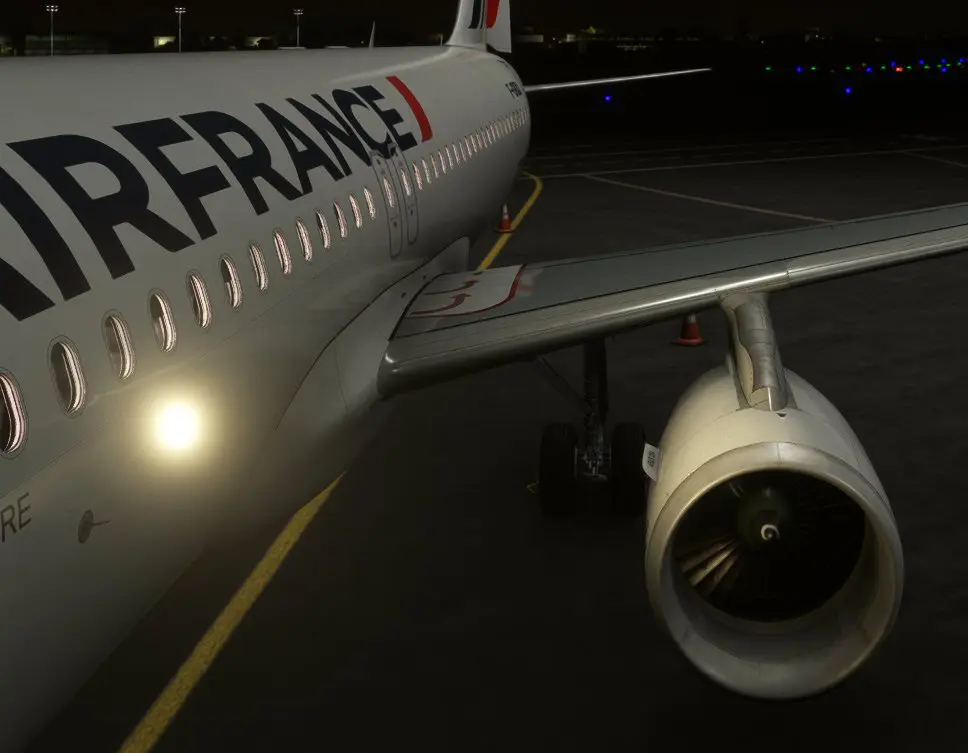
Use: switch to ON or OFF as desired.
As part of the “being seen” process, it may be entirely appropriate to use these ground lights at night or in LVO (Low Visibility Procedures) conditions.
The failure of one of the lights has no impact on the completion of the flight. However, the simultaneous failure of both lights only allows daytime flights.
3-position NAV & LOGO switch:
This paragraph is the subject of a separate article in the "Pro's Corner".
RWY TURN OFF switch:
This switch turns on or off the two cornering lights which provide lateral lighting at the front of the aircraft.
In the OFF position, the cornering lights are turned off.
In the ON position, the cornering lights are on.
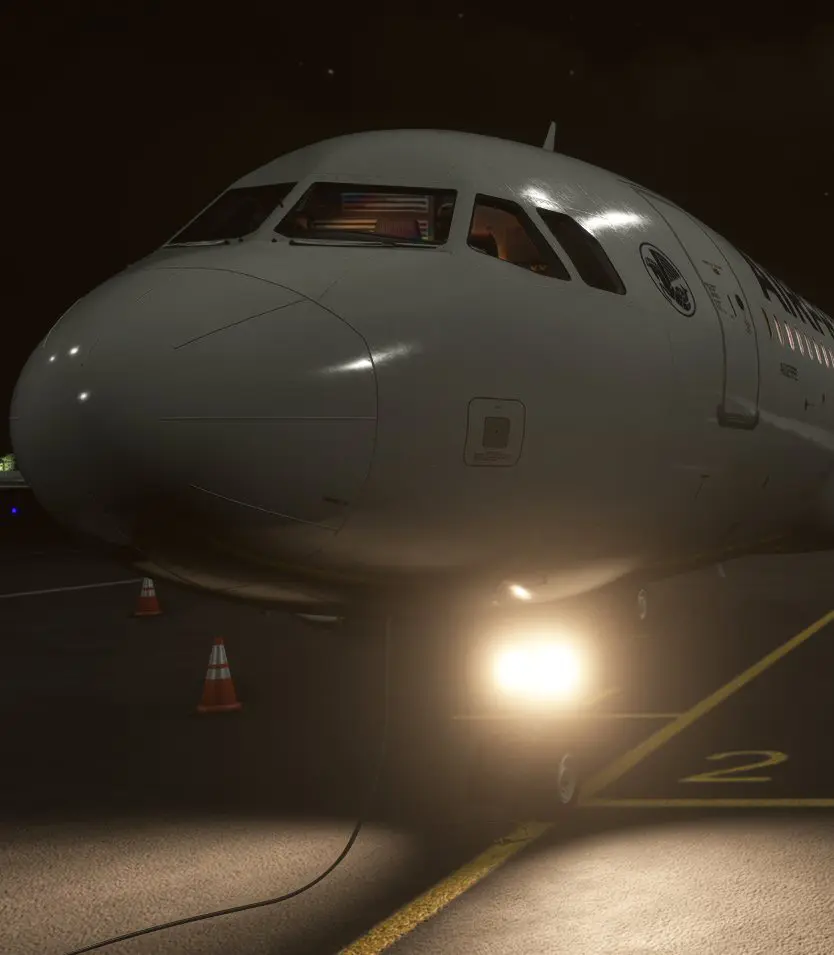
Use: switch to ON from the start of driving (simultaneously with the NOSE lights on TAXI). We will switch them to OFF when stopping while taxiing except at a stopping point on a track or at a runway intersection to signal our presence (we remain an obstacle for planes using the runway). In flight, these headlights will be positioned OFF after the re-entry of the flaps and disarming of spoilers on takeoff. They will be positioned ON after the gear is released and the spoilers are armed.
The failure of one or more strobe lights has no impact on the completion of the flight (normal operation not obligatory).
Note that these two headlights will automatically turn off when the landing gear is retracted.
Left & Right 3-position LAND switches:
This switch turns both left (L) and right (R) landing lights on or off under the wings. Their individual functioning is independent of each other but in practice they are manipulated simultaneously.
In the ON position, the landing lights are first extended from their housing then will turn on automatically once completely extended.
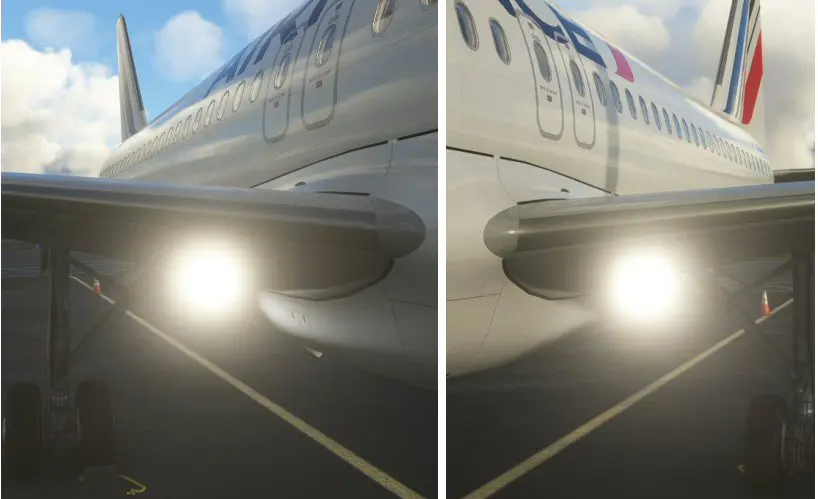
In the OFF position, the landing lights are turned off while remaining completely out of their housing.
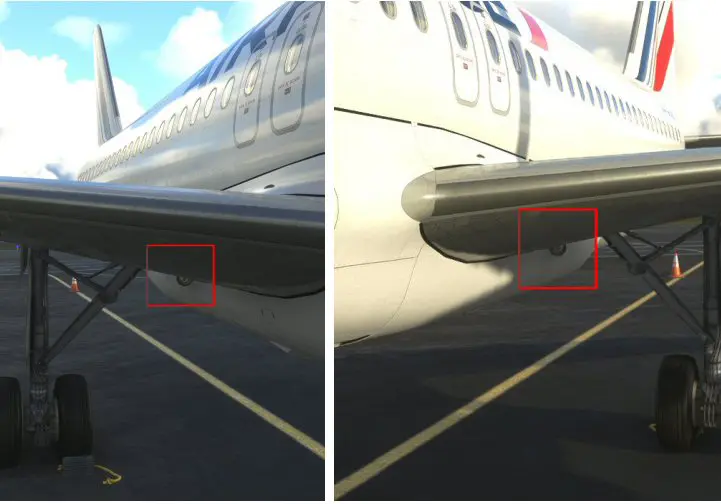
In the RETRACT position, the landing lights are turned off and then return to their housing under the wings.
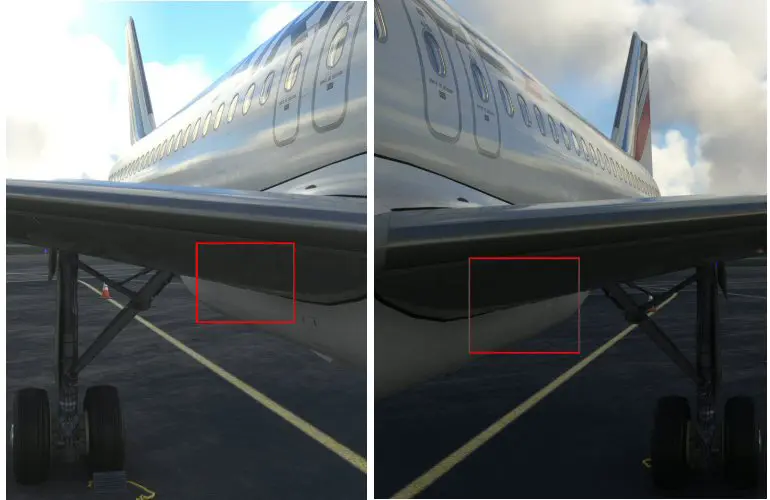
Use: switch from RETRACT to OFF for alignment authorization then to ON during take-off authorization. Change to RETRACT when passing 10,000 feet uphill. During the descent, passage to ON when passing 10,000 feet. Change to RETRACT once the runway used for landing has been cleared.
The failure of one or both LAND lights has no impact on the performance of a daytime flight (normal operation not obligatory). On the other hand, at night, only one may be out of order. if the TAXI and TAKEOFF lights work normally. The failure of the two LAND lights prohibited a night flight.
The failure of the LAND headlight extension/retraction system has no impact on the completion of the flight (normal operation not obligatory).
However, if one or the other fails in the extended position, it will be considered that fuel consumption will increase by 1% per headlight extended. If the system fails in the retracted position, the associated headlight will be considered broken with application of any associated limitations (see above).
3-position NOSE switch:
This switch turns the TAXI headlight and the TAKEOFF headlight on or off located on the front axle barrel.
In the TAXI position, the TAXI headlight comes on (1).
In the T.O position, the TAXI and TAKEOFF headlights are on (2).
In the OFF position, the TAXI and TAKEOFF headlights are turned off.
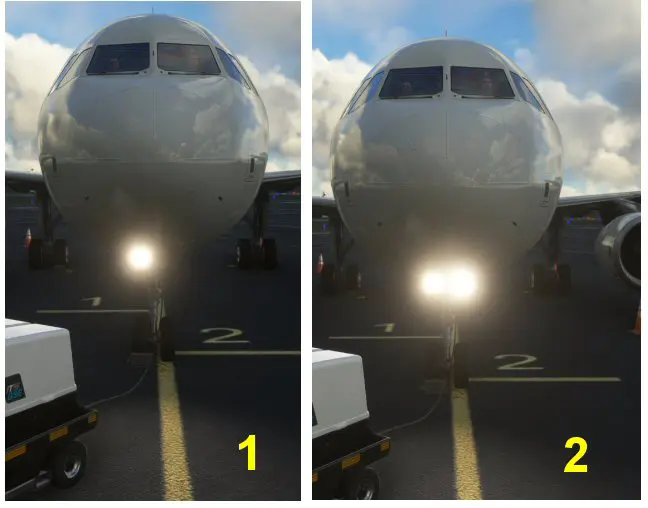
Usage: identical to RWY TURN OFF lights.
The failure of the TAXI headlight or the TAKEOFF headlight or both headlights has no impact on the completion of the flight (normal operation not obligatory).
Note that these two headlights will automatically turn off when the landing gear is retracted.
Remarks :
Exterior lighting can cause two MEMO messages to appear:
LDG LT which appears green if one of the landing lights is extended.
STOBE LT OFF which appears green if the STROBE switch is OFF in flight.
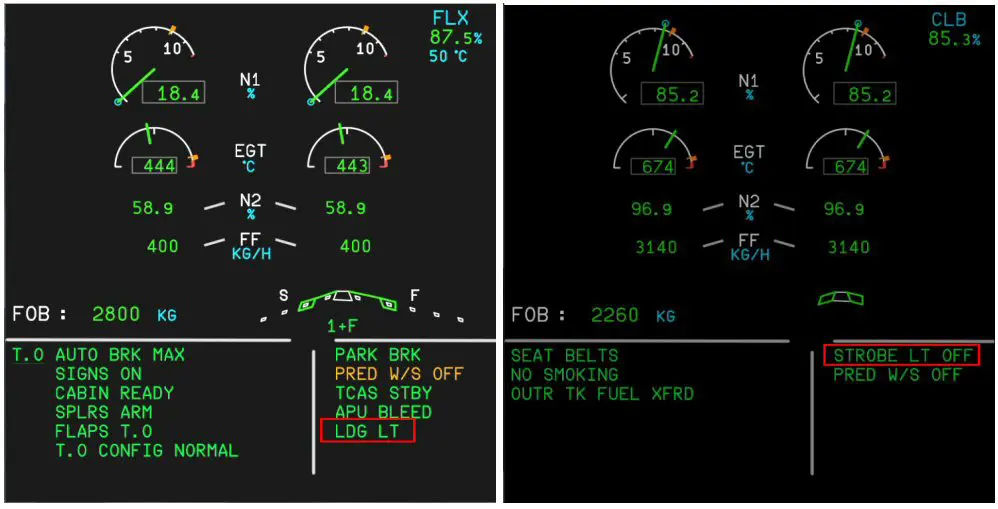
Note:
On certain Airbus (sold in the U.S.), the use of the switches may differ from the use we know on our simulators.
We can find them "inverted" compared to the other models.
This responds to a different logic of use: towards the front (i.e. towards the bottom on the upper panel) it is on ON, towards the rear (upwards) it is on OFF.
